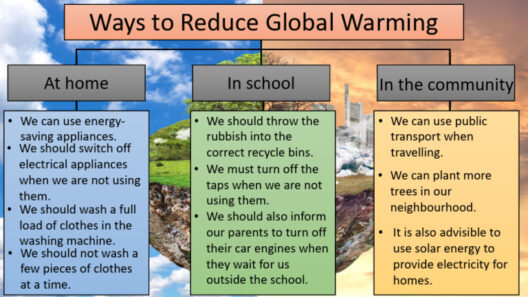In the great tapestry of our planet’s climate, a crucial phenomenon is often overlooked: greenhouse gases act like a warm, protective blanket. This metaphor is particularly apt as we delve into the ways in which these gases insulate our Earth, nurturing life, but also contributing to a perilous predicament for our environment.
To comprehend the intricate mechanics of this blanket, we must first identify its primary components. Carbon dioxide (CO2), methane (CH4), nitrous oxide (N2O), and water vapor coalesce to form a potent mixture that traps the sun’s radiant energy. Under normal circumstances, this mechanism is beneficial, maintaining a delicate equilibrium that allows life to flourish. The interplay between Earth’s surface and the atmosphere produces a finite warmth; without this natural greenhouse effect, our planet would be inhospitable, with average temperatures plummeting to frigid levels.
However, the heart of this issue lies in the alarming accumulation of these gases, primarily due to human activities such as fossil fuel combustion, deforestation, and industrial processes. Carbon dioxide, the most notorious of these culprits, has reached unprecedented concentrations since the dawn of the industrial revolution. Each molecule of CO2 released into the atmosphere contributes to the blanket’s thickness, converting our once-sustainable warmth into a stifling heat trap.
The greenhouse effect functions similarly to a one-way valve. Solar energy penetrates the Earth’s atmosphere, warming the surface in a life-sustaining manner. But as the Earth emits energy back into space, the thickened blanket of greenhouse gases absorbs much of this outbound radiation, reflecting it back toward the surface. This process results in an unrelenting cycle of heat retention, bolstering global temperatures and exacerbating climate anomalies. As our blanket grows warmer, so too does our planet.
The implications of this process are profound. Imagine the blanket gradually transforming from a gentle covering to an oppressive shroud, stifling not just the warmth of our sun but also oxidizing the very air we breathe. The consequences are far-reaching and detrimental, manifesting in severe weather patterns, melting ice caps, and rising sea levels. Climate change, driven by this enhanced greenhouse effect, threatens ecosystems and human societies alike, presenting challenges in food security, water distribution, and public health.
One of the most alarming aspects of the warming blanket is its feedback loops. As temperatures rise, certain areas become more vulnerable to changes that can amplify the problem. For instance, thawing permafrost releases vast amounts of methane, a greenhouse gas significantly more potent than carbon dioxide. This perpetuates a vicious cycle, where the initial warming begets further warming—an insidious trend that escalates with each passing year.
Moreover, the blanket’s comforts aren’t evenly distributed. The effects of climate change manifest in disparate ways across the globe, hitting vulnerable populations the hardest. Disadvantaged communities, often the least responsible for greenhouse gas emissions, suffer the brunt of extreme weather events, forced migration, and increased health risks. This inequity underscores the urgent need for systemic change in how we address climate issues, recognizing that humanity itself is interwoven in the fabric of this global crisis.
Mitigating the impact of our warming blanket requires a multi-faceted approach. The world must pivot from fossil fuels to renewable energy sources, such as solar, wind, and hydropower, minimizing the release of greenhouse gases into the atmosphere. Initiatives to enhance energy efficiency across various sectors—transportation, industry, and agriculture—are essential. Transitioning toward sustainable practices can help dissipate the fog of pollution and restore a more balanced climate.
In tandem with these efforts, reforestation and afforestation initiatives present powerful tools in our arsenal. Trees serve as natural carbon sinks, absorbing CO2 as they grow. Investing in the restoration of damaged ecosystems not only sequesters carbon but also revitalizes biodiversity and strengthens community resilience to climate impacts. The unique appeal of these solutions lies in their dual benefit: they combat climate change while promoting ecological health.
Public engagement plays a pivotal role in this fight against climate change. Educating communities about the mechanics of the greenhouse effect and its ramifications can spur diplomatic action, innovative practices, and individual responsibility. Each person has the ability to contribute positively by altering consumption habits, supporting policies aimed at environmental protection, and advocating for sustainable practices within their communities. The notion of collective action serves as a potent reminder that while the blanket may feel overwhelmingly heavy, united efforts can lift its weight.
To grapple with the complexities of our warming blanket, society must adopt a proactive mindset. Policymakers, businesses, and individuals alike must recognize the urgency of the situation and commit to tangible actions. Adaptation strategies—designing cities to withstand climate impacts, investing in disaster preparedness, and enhancing water management systems—will be essential to navigational success in this increasingly volatile climate system.
Ultimately, understanding the intricacies of the greenhouse effect and our role in shaping it paves the way toward a more sustainable future. Just as a blanket can protect us from the chill of the cold, awareness and action can shield our planet from the detrimental forces of climate change. Together, we can forge a new reality where our warming planet is rejuvenated—not through denial, but through direct and transformative engagement with the fabric of our ecosystem.






